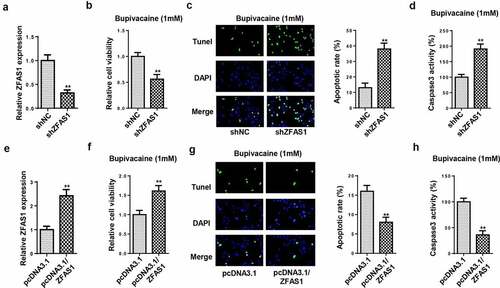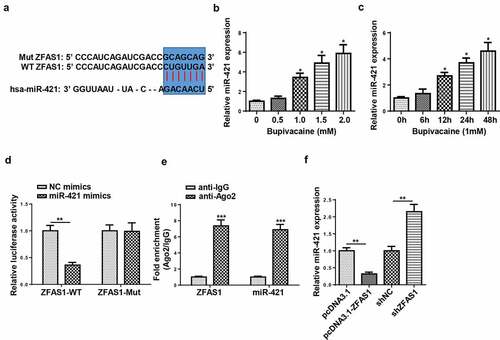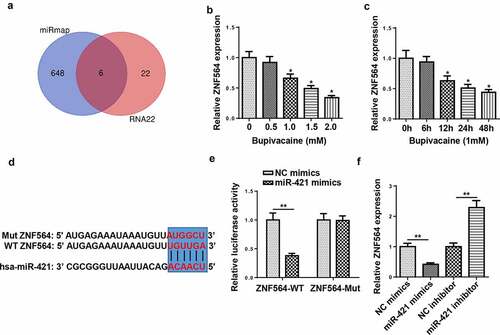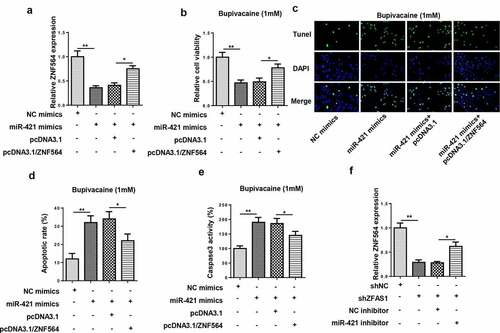Figures & data
Table 1. Primer sequences used for RT-qPCR
Figure 1. LncRNA ZFAS1 expression was downregulated with the increasing concentrations of bupivacaine

Figure 2. LncRNA ZFAS1 regulated cell viability and apoptosis in SH-SY5Y cells

Figure 3. ZFAS1 directly interacted with miR-421

Figure 4. ZFAS1 mitigated bupivacaine-induced neurotoxicity via miR-421

Figure 5. ZNF564 was the direct target of miR-421

Figure 6. ZFAS1 regulated bupivacaine-induced neurotoxicity via the miR-421/ZNF564 axis

